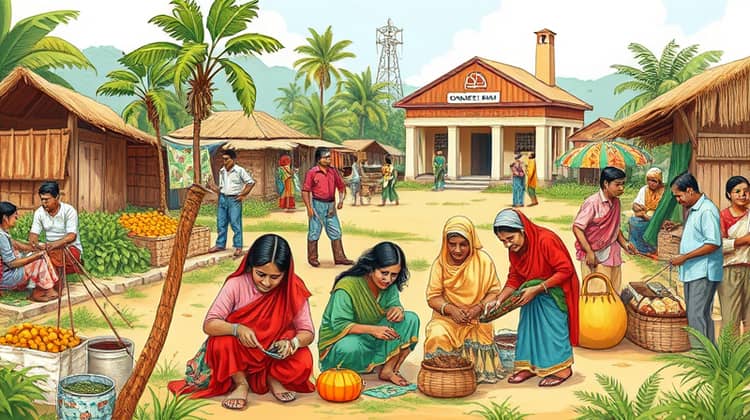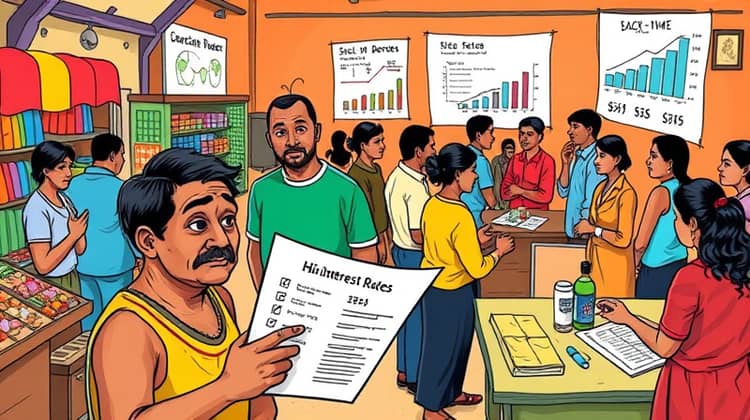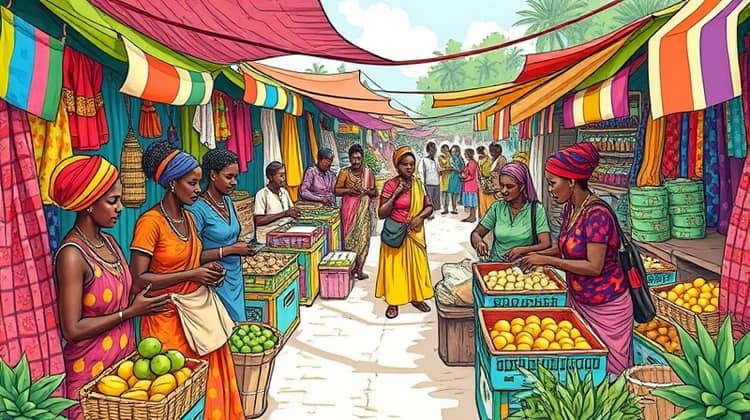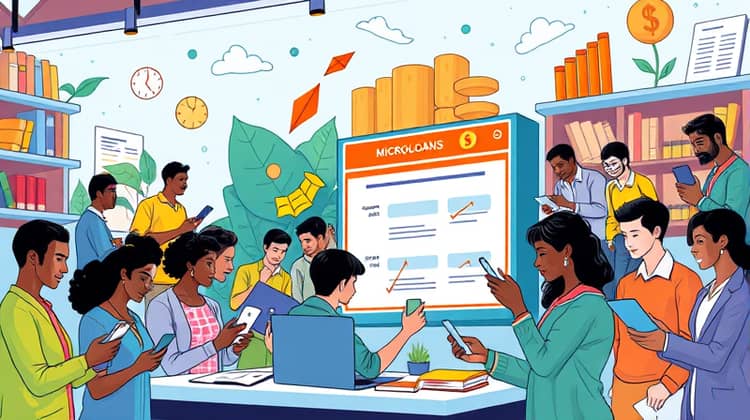In recent years, microloans have emerged as a powerful tool to help small entrepreneurs achieve their dreams. These small-scale loans provide individuals with the necessary capital to start or expand their businesses, thereby fostering economic growth and self-sufficiency. Historically, microloans have been instrumental in alleviating poverty and promoting financial inclusion, particularly among disadvantaged communities.
Microloans are generally aimed at those who might not have access to traditional banking services. They lower the barriers for aspiring entrepreneurs, allowing them to take manageable risks and invest in their enterprises. As a result, microloans have gained popularity among varying demographics, from single mothers to young innovators, propelling them towards greater financial stability.
This article explores the inception of microloans, how they function today, their advantages, potential challenges, and how they differ across global contexts. Understanding these aspects can provide valuable insights for both potential borrowers and lenders in navigating the evolving landscape of microfinance.
A Brief History of Microloans

The concept of microloans can be traced back to the 1970s in Bangladesh, where economist Muhammad Yunus pioneered the idea by lending small amounts of money to the impoverished to help them start small businesses. This model not only provided financial assistance but also emphasized the importance of trust and community in the lending process. Yunus's initiative demonstrated that even small sums could make a significant impact on people's lives by enabling them to generate income and improve their circumstances.
In 1983, Yunus formalized this approach and established the Grameen Bank, which became the first institution dedicated to microfinancing. The bank focused on providing collateral-free loans to impoverished individuals, particularly women, who were often excluded from traditional banking systems. This model quickly proved successful, leading to the replication of microfinance institutions around the world.
By the late 1990s and early 2000s, microloans had gained significant global attention, resulting in awards and recognition for Yunus's efforts, including the Nobel Peace Prize in 2006. The movement created a shift in the narrative around poverty alleviation, showcasing how financial services could empower individuals and promote entrepreneurship on a grassroots level.
How Microloans Work

Microloans generally range from $100 to $25,000, making them accessible to those who might not qualify for traditional bank loans. Borrowers typically repay these loans over a period of six months to three years, with interest rates varying from 5% to 30%, depending on the lender and the borrower's profile.
- Application Process: Interested borrowers submit an application, often detailing their business plan and financial needs.
- Loan Assessment: Lenders evaluate the application based on creditworthiness, business viability, and sometimes group guarantees where borrowers form a collective guarantee system.
- Disbursement: Once approved, the loan amount is disbursed to the borrower, allowing them to invest in their business.
- Repayment: Borrowers make regular installments over the agreed period, which helps improve their credit history and financial standing.
The microloan process not only provides essential funding but also fosters education around managing finances, creating a community of responsible borrowers who can support one another throughout their entrepreneurial journey.
Benefits of Microloans

Microloans offer numerous advantages to borrowers, particularly for those in underserved communities. Firstly, these loans often come with flexible repayment terms, making it easier for small business owners to manage their finances. This flexibility reduces the stress associated with fixed loan payments and enables borrowers to adapt to fluctuating income levels as they grow their businesses.
Secondly, microloans empower individuals, especially women, by providing them access to capital and resources that can spark innovation and creativity. This empowerment fosters a sense of self-sufficiency and promotes economic development within communities, thereby creating ripple effects that stimulate broader economic growth.
- Increased Access to Capital: Microloans provide financing to those typically excluded from traditional lending systems.
- Support for Entrepreneurship: They enable individuals to launch or expand small businesses, fostering innovation and economic growth.
- Empowerment of Women: A significant portion of microloan recipients are women, promoting gender equity and financial independence.
- Community Development: Successful microenterprises contribute to local economies and job creation.
In summary, the benefits of microloans extend beyond simple financial transactions; they spur social change and boost economic resilience in communities once plagued by poverty.
Limitations and Challenges

Despite their numerous advantages, microloans are not without limitations and challenges. One significant challenge is the high-interest rates associated with some microloans, which can surpass those of traditional financial institutions. While interest rates are comparatively low for many microloans, they can still pose financial burdens for borrowers who struggle to repay their debts, potentially leading to cycles of debt.
Additionally, not all microloan programs provide adequate support and education, leaving borrowers ill-equipped to manage their loans and businesses effectively. Without proper training and guidance, the risk of business failure increases, which can have dire consequences for individuals relying on these loans for their livelihood.
- High-interest Rates: Can burden borrowers if unexpected business issues arise.
- Lack of Financial Literacy Education: Not all institutions offer the needed guidance, leading to poor business management.
- Potential Over-Indebtedness: Borrowers may take out multiple loans from different lenders without fully understanding repayment capabilities.
- Limited Loan Amounts: The small size of the loans may not be sufficient to meet bigger financing needs.
These challenges highlight the necessity for microfinance institutions to provide comprehensive education and support alongside financial products to ensure that borrowers can succeed in their entrepreneurial ventures.
Microloans in Developed vs. Developing Countries

Microloans have found varying levels of success when comparing developed and developing countries. In developing nations, microloans play a crucial role in facilitating access to capital for underserved populations. These loans often fill the void left by traditional banks, promoting entrepreneurship and aiding in poverty alleviation. For many, microloans serve as a lifeline that fosters self-sufficiency and economic empowerment.
Conversely, in developed countries, microloans may not be as widely adopted as they are seen as a niche financial product. While they do exist, many small entrepreneurs in developed markets often resort to more conventional financing options such as bank loans, crowdfunding, or angel investors, making the microloan model less prevalent. However, some programs have emerged in urban areas targeting specific demographics, such as minority-owned enterprises or tech startups.
The Future of Microloans

The future of microloans appears promising, particularly with advancements in technology and the growth of digital lending platforms. These platforms have the capability to reach a larger audience, streamline the application process, and reduce costs, making microloans more accessible to potential borrowers.
Moreover, as awareness around financial education grows, many microfinance institutions are starting to emphasize not just lending but also the importance of financial literacy, which can significantly boost borrowers' chances of success. This holistic approach could redefine the landscape of microloans and enhance their effectiveness in helping small entrepreneurs thrive.
Conclusion

In conclusion, microloans represent a significant financial innovation that has the potential to empower communities, reduce poverty, and foster entrepreneurship on a global scale. While challenges do exist, the continued evolution of microfinance, along with a commitment to education and sound financial practices, can enhance the impact of microloans. As we move forward, it is essential to adopt responsible lending principles and support borrowers in their journeys towards economic independence.
Ultimately, microloans not only provide financial resources but also symbolize hope and opportunity for small entrepreneurs around the world. By bridging the gap between dreams and reality, microloans continue to play a fundamental role in creating a more inclusive financial landscape.














